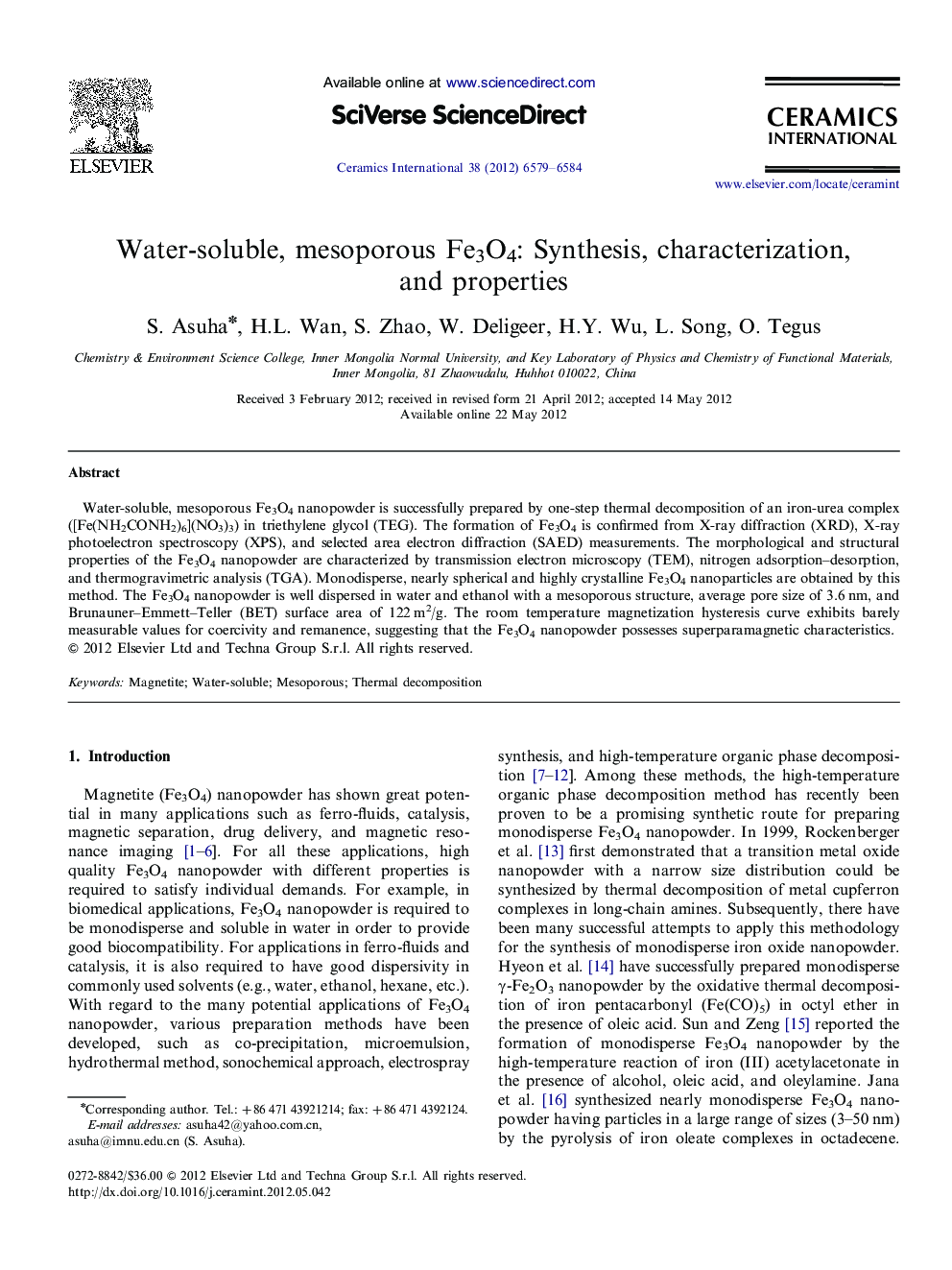| Article ID | Journal | Published Year | Pages | File Type |
|---|---|---|---|---|
| 1462431 | Ceramics International | 2012 | 6 Pages |
Water-soluble, mesoporous Fe3O4 nanopowder is successfully prepared by one-step thermal decomposition of an iron-urea complex ([Fe(NH2CONH2)6](NO3)3) in triethylene glycol (TEG). The formation of Fe3O4 is confirmed from X-ray diffraction (XRD), X-ray photoelectron spectroscopy (XPS), and selected area electron diffraction (SAED) measurements. The morphological and structural properties of the Fe3O4 nanopowder are characterized by transmission electron microscopy (TEM), nitrogen adsorption–desorption, and thermogravimetric analysis (TGA). Monodisperse, nearly spherical and highly crystalline Fe3O4 nanoparticles are obtained by this method. The Fe3O4 nanopowder is well dispersed in water and ethanol with a mesoporous structure, average pore size of 3.6 nm, and Brunauner–Emmett–Teller (BET) surface area of 122 m2/g. The room temperature magnetization hysteresis curve exhibits barely measurable values for coercivity and remanence, suggesting that the Fe3O4 nanopowder possesses superparamagnetic characteristics.
